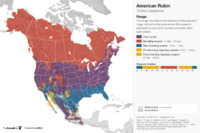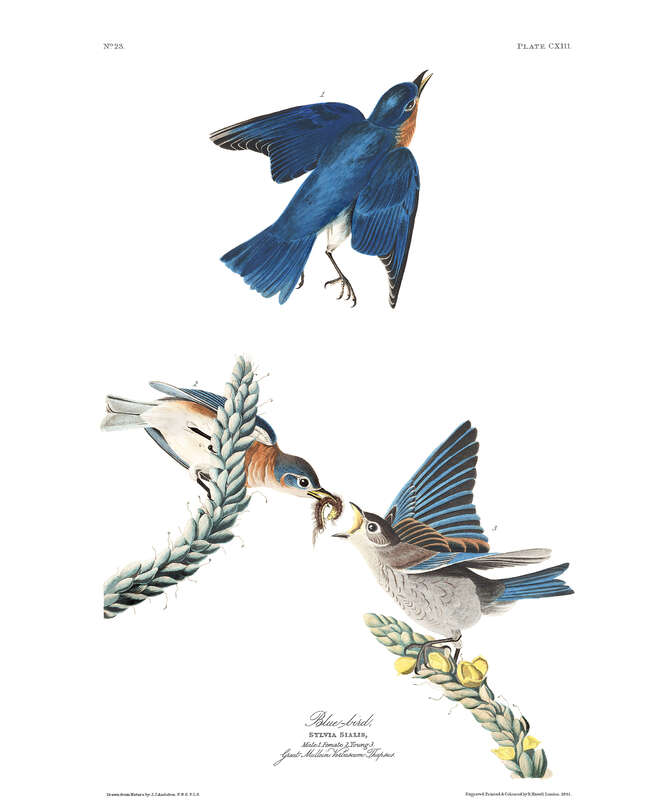Thrushes and Bluebirds
Birds in the Turdidae family are characterized by their slender beaks, short wings, and medium-length tails. They are between 4.5-13 inches in length and they typically have brown, blue, gray, or black coloration, with many having patches of yellow, red, orange, or white feathers. They eat berries, seeds, leaves, insects, fruit, and worms. There are 180 species of birds in this family found worldwide in a large variety of habitats.
Included below are the American Robin and the Eastern Bluebird.
American Robin
Turdus migratorius
Habitat: Cities, towns, lawns, farmland, forests; in winter, berry-bearing trees.
Preferred Food: Mostly insects, berries, earthworms. Feeds heavily on fruit, especially in winter. Young are fed mostly on insects and earthworms.
Fun Fact: American robins are entirely unrelated to the more commonly known European robins - they only share a name because their coloring is similar!
Eastern Bluebird
Sialia sialis
Habitat: Open country with scattered trees; suburban areas with large lawns
Preferred Food: Mostly insects and berries
Fun Fact: Bluebirds don’t have the strength to dig out their own nesting holes in trees, so they have to rely on pre-existing cavities or bluebird boxes.



